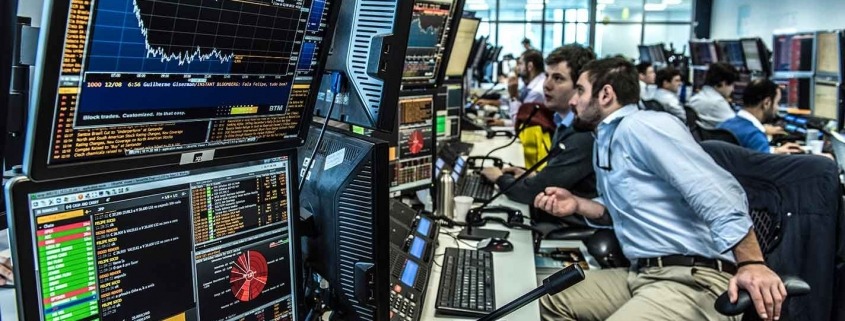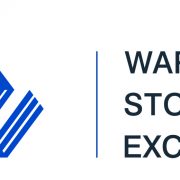Independent initiatives that analyze crypto exchanges liquidity and quality
Volume is flawed metric of crypto exchanges liquidity. Because of wash trading practices of many crypto exchanges as well as token issuers, using trading volume as a basis of comparison is misleading. Many exchanges have problems attracting professional market makers and are trying to make shortcuts on the way to attract retail investors. Moreover attracting professional investors requires investments in crypto exchanges system development with stable and performant APIs so they could connect their algorithmic trading systems.]
There are more and more independent initiatives that are taking a closer look at what constitutes a high quality crypto exchange. Three major ones are Blockchain Transparency Institute, CryptoCompare Benchmark and Cointelligence Report. I also take a quick look at the Bitwise report for SEC from March 2019.
Blockchain Transparency Institute
BTI concentrates on analyzing crypto exchanges data feeds to spot wash trading mechanisms and provide the real volume metric which is cleaned out of suspicious activities.
BTI identified 17 of the CoinMarketCap Top 25 crypto exchanges to be over 99% wash traded. This one number alone shows the magnitude of the problem, as well as how volume is a false measure.
According to BTI Report crypto exchanges which are faking their volumes use a variety of different tactics to try and swindle investors. These tactics include buying twitter followers and likes, filling up fake order books, mirror wash trading the largest exchanges with real volume, and trying to disguise their wash trading using various bot settings to not affect price. On many of these exchanges trading high volumes closing the spread would make the volume plummet as the trading bots had no room to wash trade with themselves. Welcome to the wild wild west of no regulation and surveillance.
BTI finds that “all crypto exchanges combined are currently reporting around $50 Billion in daily volume on CMC. After removing all the wash traded volume via our algorithms the accurate number is around $4-5 Billion. About 88-92% of daily trading volume is fabricated depending on the day. Bitcoin’s daily trading volume is about 92% fabricated, which is in line with the space as a whole when comparing our findings to top data sites reporting wash traded volumes.”
And further “On our list of the top 40 largest exchanges with actual volume, Bitcoin’s volume is about 65% fabricated. Almost all of this fabricated volume comes from OKEx, Bibox, HitBTC, and Huobi. Of the top 25 tokens by market cap, Tron and Ethereum Classic are the highest wash traded tokens on our list at 85% fake volume each and coming in at #24 and #25 of the most wash traded tokens.”
Top 10 cryptocurrency exchanges according to real (not wash traded) volume by BTI
- Binance
- Kucoin
- Liquid
- Huobi
- Coinbase
- OKEx
- Bitfinex
- Upbit
- Kraken
- Bitstamp
CryptoCompare
CryptoCompare’s Exchange Ranking methodology utilises a combination of 34 qualitative and quantitative metrics to assign a grade to over 100 active crypto exchanges. Metrics were categorised into several buckets ensuring that no one metric overly influences the overall exchange ranking. Each crypto exchange grade is derived from a broad due diligence check using qualitative data, followed by a market quality analysis that uses a combination of order book and transactional data.
Due diligence check comprises of 6 main categories that attempt to qualitatively rate each exchange on the basis of:
- Geography
- Legal and regulatory metrics
- Calibre of investment
- Team and company quality
- Quality of data provision
- Trade surveillance
Although at Empirica we believe in numbers, I like the qualitative approach, as it’s also possible to prove a correlation of metric like number of employees and business size of the exchange, therefore proving this way it’s quality.
Another important factor is Market Quality. Crypto compare measures the market quality of each exchange using a combination of 5 metrics (derived from trade and order book data) that aim to measure the:
- Cost to trade,
- Liquidity,
- Market stability,
- Behaviour towards sentiment
- “Natural” trading behaviour
Exchanges were rated based on a combination of 9 of the most liquid BTC and ETH markets.
It’s worth taking a closer look how CryptoCompare report approaches Spread and Liquidity metrics:
“Generally, those exchanges which offer incentives to provide liquidity through either low or negative maker fees will achieve the tightest spreads. Due to the spread being calculated using the best bid and offer, it is misleading to use it as a sole gauge of liquidity and therefore as the market cost to trade; it must be used in conjunction with a depth
measurement to find the likely transaction price for any given size of transaction.”
Good point. And liquidity:
“Market depth is the total volume of orders in the order book. It provides an idea of how much it is possible to trade on crypto exchange, and how much the price is likely to move if large amounts are traded. An exchange with greater average depth is likely to be more stable (i.e flash crashes are much less likely) and allows trading of greater amounts at better prices.
We consider the depth up to 1% either side of the mid price.
Depth = E(depthUp+depthDown)/2
Where depthUp is the total volume that would be required to move the price by 1% upwards from the mid price, and
depthDown is the total volume that would be required to move the price by 1% downwards from the mid price.”
Top 10 crypto exchanges according CryptoCompare quality benchmark:
- Coinbase
- Poloniex
- Bitstamp
- bitFlyer
- Liquid
- itBit
- Kraken
- Binance
- Gemini
- Bithumb
Cointelligence Rating System
Cointelligence is the most qualitative rating of crypto exchanges from the above. The methodology of the team was to manaully open accounts on all analyzed crypto exchanges and check from the user perspective the core aspects of beeing an exchange customer. The aspects cover:
Usability – covers KYC process, the quality of exchange website, extent of features and how easy it is to get a human answer from support staff.
Performance – functionalities and historical robustness of exchange matching engine, fees height, trading instruments like futures contracts and margin trading.
Team – analysis of the available information about management team behind the crypto exchange, especially business and technical experience of C-level staff, including person responsible for exchange’s security
Risk – information on past hacks, insurance status, account security layers but also regulatory status of cryptocurrency exchange. Based on the geographical location of the exchange headquarters and registration any potential run-ins with the local law or any sign of authorities involvement.
This way Contelligence analyzed 85 crypto exchanges, but only 15 is rated with good quality mark, lead by Liquid and Gemini.
Top 10 cryptocurrency exchanges by Cointelligence by qualitative criteria
- Liquid (Quoine)
- Gemini
- Binance
- Bitstamp
- Gibraltar Blockchain Exchange
- OKEx
- Bittrex
- itBit
- Kraken
- ABCC
Bitwise report for SEC
Bitwise analysis is based on detecting wash trading patterns in public marked data published by crypto exchanges. Out of 81 exchanges they have analyzed in March 2019 only 10 were identified as be free of wash trading practices. These exchanges are:
- Binance
- Bitfinex
- Kraken
- Bitstamp
- Coinbase
- bitFlyer
- Gemini
- itBit
- Bitrex
- Poloniex
Bitwise identified that only 4,5% (about $275M daily) of officially reported volume (eg by the public sources like coinmarketcap) is the actual volume. The rest is wash traded.
The Bitcoin market is more orderly and efficient than is commonly understood. The 10 exchanges trade as a uniform, highly connected market. They form a singular price. Average deviations from the aggregate price for the ten exchanges is well within the expected arbitrage band when you account for exchange-level fees (~30 basis points), volatility and hedging costs. Arbitrage is operating well. Sustained deviations (defined as deviations >1% that last more than 100 seconds) appear as single white lines on the graph below. The graph demonstrates that the ten exchanges trade at a single unified price.
So although the message about the amount of wash traded volume is alarming, the report shows that the real crypto market is quite concentrated, ordered, efficient and well performing. The rest is just noise.
Schedule your appointment right now to learn more









